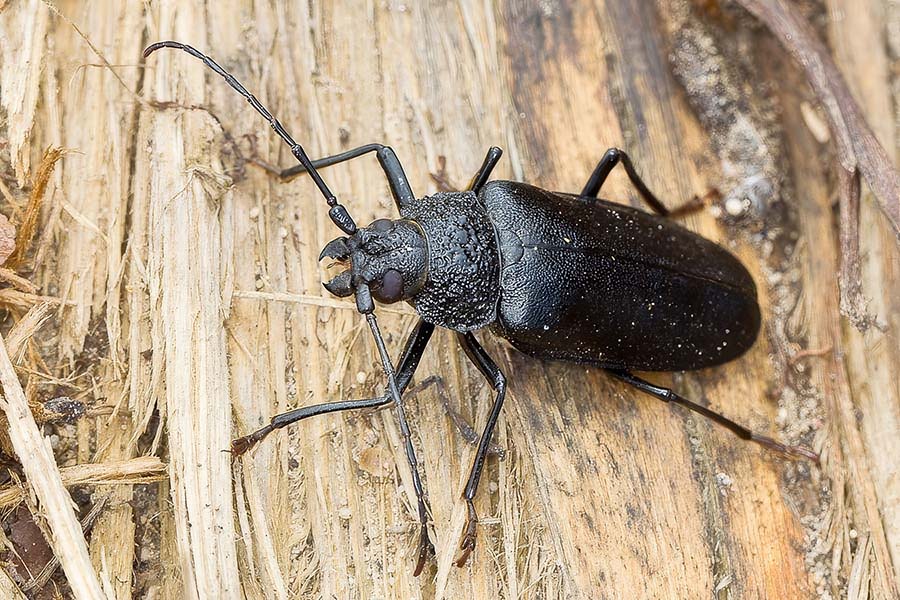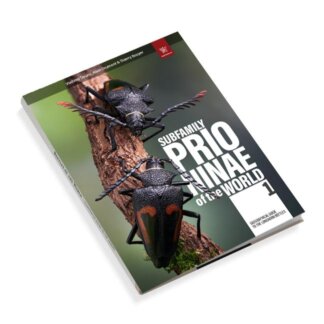Unique atlases with photos. The Longhorn Beetle, belonging to the family Cerambycidae, is a diverse group of insects characterized by their elongated bodies and long antennae, which can often exceed the length of their bodies. With over 20,000 species described globally, Longhorn Beetles exhibit a wide range of colors, sizes, and habitats, making them a significant subject of study within entomology.
Book novelties:
Prioninae of the World I., Cerambycidae of the Western Paleartic I. June Bugs,
Types of beetles insects
New E-Book: Ground Beetles, Tiger Beetles, Longhorn Beetles, Jewel Beetles, Stag Beetles, Carpet Beetles, Scarab Beetles, Rhinoceros Beetles, Weevil Beetles, Blister Beetles, Leaf Beetles, Flower Beetles,
Start Shopping, Start Saving – prices from $3 USD
Longhorn Beetle
Cerambycidae
We recommend:
jeweled beetles, ground beetles, longhorn beetles, goliath beetle, stag beetle, carpet beetles
-
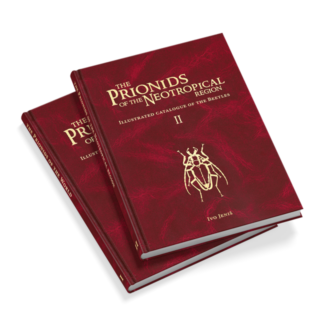 The Prionids Collection BundleSale Product on sale
The Prionids Collection BundleSale Product on sale€ 120.00€ 80.00 -
 The Prionids of the WorldSale Product on sale
The Prionids of the WorldSale Product on sale€ 65.00€ 49.00 -
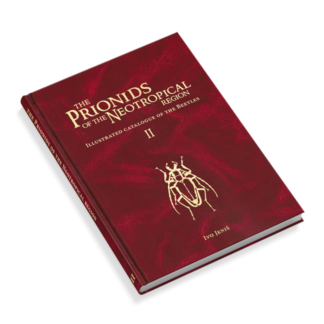 The Prionids of the Neotropical regionSale Product on sale
The Prionids of the Neotropical regionSale Product on sale€ 65.00€ 55.00
Books about Beetles
Unique pictorial atlases for identifying Beetles:
(2020) Tiger Beetles of the World, Cicindelidae, Illustrated guide to the genera
(2023) Tiger Beetles of Africa, Cicindelidae, Geographical guide to the family Cicindelidae
(2024) Tiger Beetles of Orient, Cicindelidae, Geographical guide to the family Cicindelidae
(2022) Ground Beetles of Africa, Afrotropical Region
(2022) Jewel Beetles of the World, Buprestidae, Illustrated guide to the Superfamily Buprestoidea
(2008) The Prionids of the World, Prioninae, Illustrated catalogue of the Beetles
(2010) The Prionids of the Neotropical region, Prioninae, Illustrated catalogue of the Beetles
Books about Beetles
Longhorn Beetle
These beetles are primarily wood-borers, with larvae that develop within the wood of trees and shrubs. The life cycle of a Longhorn Beetle typically includes four stages: egg, larva, pupa, and adult. The larval stage can last several months to several years, depending on the species and environmental conditions. For instance, the larvae of some species can take up to three years to mature, while others may complete their development in just a few months.
Longhorn Beetles play a crucial role in their ecosystems. As decomposers, they contribute to the breakdown of dead and decaying wood, facilitating nutrient cycling within forest ecosystems. Their activities can also create habitats for other organisms, including fungi and other insects. However, some species are considered pests, particularly in forestry and agriculture, as they can cause significant damage to living trees and timber products.
In terms of morphology, Longhorn Beetles exhibit a variety of adaptations that enhance their survival. Their long antennae are believed to serve multiple functions, including sensory perception and communication. Research indicates that these antennae can detect pheromones released by potential mates or suitable habitats, aiding in reproduction and foraging behaviors.
From a conservation perspective, several Longhorn Beetle species are threatened due to habitat loss, climate change, and invasive species. Conservation efforts are essential to protect these insects and their habitats. Studies have shown that maintaining biodiversity within forest ecosystems can enhance the resilience of Longhorn Beetle populations, thereby supporting overall ecological health.
In conclusion, the Longhorn Beetle is a fascinating subject of study within entomology, offering insights into ecological interactions, evolutionary adaptations, and conservation challenges. Understanding their biology and ecological roles is vital for both scientific research and practical applications in forestry and pest management.
We recommend: jeweled beetles, ground beetles, tiger beetles, goliath beetle, stag beetle, carpet beetles
Family Cerambycidae Latreille, 1802
Subfamily Prioninae Latreille, 1802
-
Tribe Acanthophorini J. Thomson, 1864
-
Tribe Aegosomatini J. Thomson, 1861
-
Tribe Anacolini J. Thomson, 1857
-
Tribe Cacoscelini J. Thomson, 1861
-
Tribe Callipogonini J. Thomson, 1861
-
Tribe Calocomini Galileo & Martins, 1993
-
Tribe Cantharocnemini J. Thomson, 1861
-
Tribe Catypnini Lacordaire, 1868
-
Tribe Ergatini Fairmaire, 1864
-
Tribe Eurypodini Gahan, 1906 (1868)
-
Tribe Hopliderini J. Thomson, 1864
-
Tribe Macrodontiini J. Thomson, 1861
-
Tribe Macrotomini J. Thomson, 1861
-
Tribe Mallaspini J. Thomson, 1861
-
Tribe Meroscelisini J. Thomson, 1861
-
Tribe Osphryonini Jin et al., 2023
-
Tribe Parandrini Blanchard, 1845
-
Tribe Prionini Latreille, 1802
-
Tribe Rhipidocerini Jin et al., 2023
-
Tribe Sceleocanthini Lacordaire, 1868
-
Tribe Solenopterini Lacordaire, 1868
-
Tribe Tereticini Lameere, 1913
-
Tribe Vesperoctenini Vives, 2005
Subfamily Cerambycinae Latreille, 1802
-
Tribe Acangassuini Galileo & Martins, 2001
-
Tribe Achrysonini Lacordaire, 1868
-
Tribe Agallissini J.L. LeConte, 1873
-
Tribe Alanizini Di Iorio, 2003
-
Tribe Anaglyptini Lacordaire, 1868 [NP]
-
Tribe Aphanasiini Lacordaire, 1868
-
Tribe Aphneopini Lacordaire, 1868
-
Tribe Auxesini Lacordaire, 1872
-
Tribe Basipterini Fragoso et al., 1987
-
Tribe Bimiini Lacordaire, 1868
-
Tribe Bothriospilini Lane, 1950
-
Tribe Brachypteromini Sama, 2008
-
Tribe Callichromatini Swainson, 1840
-
Tribe Callidiini W. Kirby, 1837
-
Tribe Callidiopini Lacordaire, 1868
-
Tribe Cerambycini Latreille, 1802
-
Tribe Certallini Fairmaire, 1864
-
Tribe Chlidonini C.O. Waterhouse, 1879
-
Tribe Cleomenini Lacordaire, 1868
-
Tribe Clytini Mulsant, 1839
-
Tribe Compsocerini J. Thomson, 1864
-
Tribe Coptommatini Lacordaire, 1869
-
Tribe Curiini J.L. LeConte, 1873
-
Tribe Deilini Fairmaire, 1864
-
Tribe Dejanirini Lacordaire, 1868
-
Tribe Dichophyiini Gistel, 1848 165165
-
Tribe Diorini Lane, 1950
-
Tribe Distichocerini Pascoe, 1867
-
Tribe Dodecosini Aurivillius, 1912
-
Tribe Dorcasomini Lacordaire, 1868
-
Tribe Dryobiini Arnett, 1962 H
-
Tribe Eburiini Blanchard, 1845
-
Tribe Ectenessini Martins, 1998
-
Tribe Elaphidiini J. Thomson, 1864
-
Tribe Eligmodermini Lacordaire, 1868
-
Tribe Erlandiini Aurivillius, 1912
-
Tribe Eroschemini Lacordaire, 1868
-
Tribe Eumichthini Linsley, 1940
-
Tribe Gahaniini Quentin & Villiers, 1969
-
Tribe Glaucytini Lacordaire, 1868
-
Tribe Graciliini Mulsant, 1839
-
Tribe Hesperophanini Mulsant, 1839
-
Tribe Hesthesini Pascoe, 1867
-
Tribe Hexoplonini Martins, 2006
-
Tribe Holopleurini Chemsak & Linsley, 1974
-
Tribe Holopterini Lacordaire, 1868
-
Tribe Hyboderini Linsley, 1940
-
Tribe Hylotrupini Rose, 1983
-
Tribe Ideratini Martins & Napp, 2009
-
Tribe Lissonotini Swainson, 1840 H
-
Tribe Luscosmodicini Martins, 2003
-
Tribe Lygrini Sama, 2008
-
Tribe Macronini Lacordaire, 1868 P
-
Tribe Megacoelini Quentin & Villiers, 1969
-
Tribe Methiini J. Thomson, 1860
-
Tribe Molorchini Gistel, 1848
-
Tribe Mythodini Lacordaire, 1868
-
Tribe Necydalopsini Lacordaire, 1868
-
Tribe Neocorini Martins, 2005
-
Tribe Obriini Mulsant, 1839
-
Tribe Ochyrini Pascoe, 1871
-
Tribe Oedenoderini Aurivillius, 1912
-
Tribe Oemini Lacordaire, 1868
-
Tribe Opsimini J.L. LeConte, 1873
-
Tribe Oxycoleini Martins & Galileo, 2003
-
Tribe Paraholopterini Martins, 1997
-
Tribe Phalotini Lacordaire, 1868
-
Tribe Phlyctaenodini Lacordaire, 1868
-
Tribe Phoracanthini Newman, 1840
-
Tribe Phyllarthriini Lepesme & Breuning, 1956
-
Tribe Piesarthriini McKeown, 1947
-
Tribe Piezocerini Lacordaire, 1868
-
Tribe Platyarthrini H.W. Bates, 1870
-
Tribe Plectogasterini Quentin & Villiers, 1969
-
Tribe Plectromerini Nearns & Braham, 2008
-
Tribe Pleiarthrocerini Lane, 1950
-
Tribe Plesioclytini Wappes & Skelley, 2015
-
Tribe Protaxini Gahan, 1906
-
Tribe Prothemini Lacordaire, 1868
-
Tribe Psebiini Lacordaire, 1868
-
Tribe Pseudocephalini Aurivillius, 1912 (1861)
-
Tribe Pseudolepturini J. Thomson, 1861
-
Tribe Psilomorphini Lacordaire, 1868
-
Tribe Pteroplatini J. Thomson, 1861
-
Tribe Pyrestini Lacordaire, 1868
-
Tribe Rhagiomorphini Newman, 1841
-
Tribe Rhinotragini J. Thomson, 1861
-
Tribe Rhopalophorini Blanchard, 1845
-
Tribe Rosaliini Fairmaire, 1864
-
Tribe Sestyrini Lacordaire, 1868
-
Tribe Smodicini Lacordaire, 1868
-
Tribe Spintheriini Lacordaire, 1869
-
Tribe Stenhomalini Miroshnikov, 1989
-
Tribe Stenopterini Gistel, 1848
-
Tribe Strongylurini Lacordaire, 1868
-
Tribe Sydacini Martins, 2014
-
Tribe Tessarommatini Lacordaire, 1868
-
Tribe Thraniini Gahan, 1906
-
Tribe Thyrsiini Marinoni & Napp, 1984
-
Tribe Tillomorphini Lacordaire, 1868
-
Tribe Torneutini J. Thomson, 1861
-
Tribe Trachyderini Dupont, 1836
-
Tribe Tragocerini Pascoe, 1867
-
Tribe Trichomesiini Aurivillius, 1912
-
Tribe Trigonarthrini Villiers, 1984
-
Tribe Tropidini Martins & Galileo, 2007
-
Tribe Tropocalymmatini Lacordaire, 1868
-
Tribe Typhocesini Lacordaire, 1868
-
Tribe Unxiini Napp, 2007
-
Tribe Uracanthini Blanchard, 1853
-
Tribe Vesperellini Sama, 2008
-
Tribe Xystrocerini Blanchard, 1845
Subfamily Lepturinae Latreille, 1802
-
Tribe Acmaeopini Della Beffa, 1915
-
Tribe Caraphiini Ohbayashi et al., 2016
-
Tribe Desmocerini Blanchard, 1845
-
Tribe Encyclopini J.L. LeConte, 1873
-
Tribe Evodinini Zamoroka, 2022
-
Tribe Lepturini Latreille, 1802 H
-
Tribe Necydalini Latreille, 1825
-
Tribe Oxymirini Danilevsky, 1997
-
Tribe Pidoniini Zamoroka, 2022
-
Tribe Rhagiini W. Kirby, 1837
-
Tribe Stenocorini J. Thomson, 1861
-
Tribe Rhamnusiini Sama, 2009
-
Tribe Sachalinobiini Danilevsky, 2010
-
Tribe Teledapini Pascoe, 1871
-
Tribe Xylosteini Reitter, 1913
Subfamily Spondylidinae Audinet-Serville, 1832
-
Tribe Anisarthrini Mamaev & Danilevsky, 1973
-
Tribe Asemini J. Thomson, 1861
-
Tribe Atimiini J.L. LeConte, 1873
-
Tribe Nothorhinini Zagajkevich, 1991
-
Tribe Saphanini Gistel, 1848
-
Tribe Spondylidini Audinet-Serville, 1832
-
Tribe Tetropiini Seidlitz, 1891
Subfamily Lamiinae Latreille, 1825
-
Tribe Acanthocinini Blanchard, 1845
-
Tribe Acanthoderini J. Thomson, 1860
-
Tribe Acmocerini J. Thomson, 1864
-
Tribe Acridocephalini E.S. Dillon & L.S. Dillon, 1959
-
Tribe Acrocinini Swainson, 1840
-
Tribe Aderpasini Breuning & Téocchi, 1978
-
Tribe Aerenicini Lacordaire, 1872
-
Tribe Agapanthiini Mulsant, 1839
-
Tribe Amphoecini Breuning, 1951
-
Tribe Ancitini Aurivillius, 1917 P
-
Tribe Ancylonotini Lacordaire, 1869
-
Tribe Anisocerini J. Thomson, 1860
-
Tribe Apomecynini J. Thomson, 1860
-
Tribe Astathini J. Thomson, 1864
-
Tribe Batocerini J. Thomson, 1864
-
Tribe Calliini J. Thomson, 1864
-
Tribe Ceroplesini J. Thomson, 1860
-
Tribe Cloniocerini Lacordaire, 1872
-
Tribe Colobotheini J. Thomson, 1860
-
Tribe Compsosomatini J. Thomson, 1857
-
Tribe Cyrtinini J. Thomson, 1864 H
-
Tribe Desmiphorini J. Thomson, 1860
-
Tribe Dorcadionini Swainson, 1840
-
Tribe Dorcaschematini J. Thomson, 1860
-
Tribe Elytracanthinini Bousquet, 2009
-
Tribe Enicodini J. Thomson, 1864
-
Tribe Eunidiini Téocchi et al., 2010
-
Tribe Eupromerini Galileo & Martins, 1995
-
Tribe Exocentrini Pascoe, 1864
-
Tribe Forsteriini Tippmann, 1960
-
Tribe Gyaritini Breuning, 1950
-
Tribe Heliolini Breuning, 1951
-
Tribe Hemilophini J. Thomson, 1868 [NP]
-
Tribe Homonoeini J. Thomson, 1864
-
Tribe Hyborhabdini Aurivillius, 1911
-
Tribe Lamiini Latreille, 1825
-
Tribe Laticraniini Lane, 1959
-
Tribe Mauesiini Lane, 1956
-
Tribe Megabasini J. Thomson, 1860
-
Tribe Mesosini Mulsant, 1839
-
Tribe Microcymaturini Breuning & Téocchi, 1985
-
Tribe Morimonellini Lobanov et al., 1981
-
Tribe Morimopsini Lacordaire, 1869
-
Tribe Nyctimeniini Gressitt, 1951
-
Tribe Oculariini Breuning, 1950
-
Tribe Onciderini J. Thomson, 1860
-
Tribe Oncideropsidini Aurivillius, 1922
-
Tribe Onychogleneini Aurivillius, 1923
-
Tribe Parmenini Mulsant, 1839
-
Tribe Petrognathini Blanchard, 1845
-
Tribe Phacellini Lacordaire, 1872
-
Tribe Phantasini Kolbe, 1897
-
Tribe Phrynetini J. Thomson, 1864
-
Tribe Phymasternini Téocchi, 1989
-
Tribe Pogonocherini Mulsant, 1839
-
Tribe Polyrhaphidini J. Thomson, 1860
-
Tribe Pretiliini Martins & Galileo, 1990
-
Tribe Proctocerini Aurivillius, 1922
-
Tribe Prosopocerini J. Thomson, 1864
-
Tribe Pteropliini J. Thomson, 1860
-
Tribe Saperdini Mulsant, 1839
-
Tribe Stenobiini Breuning, 1950
-
Tribe Sternotomini J. Thomson, 1860
-
Tribe Tapeinini J. Thomson, 1857
-
Tribe Tetraopini J. Thomson, 1860
-
Tribe Tetraulaxini Breuning & Téocchi, 1977
-
Tribe Tetropini Portevin, 1927
-
Tribe Theocrini Lacordaire, 1872
-
Tribe Tmesisternini Blanchard, 1853
-
Tribe Tragocephalini J. Thomson, 1857
-
Tribe Xenicotelini Matsushita, 1933
-
Tribe Xenofreini Aurivillius, 1923
-
Tribe Xenoleini Lacordaire, 1872
-
Tribe Xylorhizini Lacordaire, 1872
-
Tribe Zygocerini J. Thomson, 1864
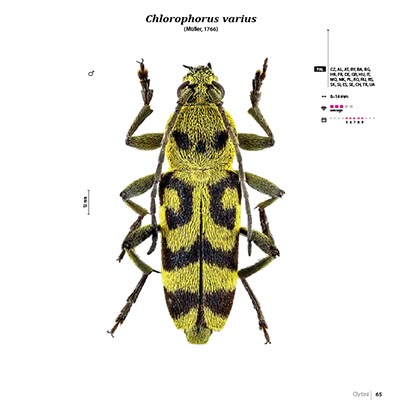
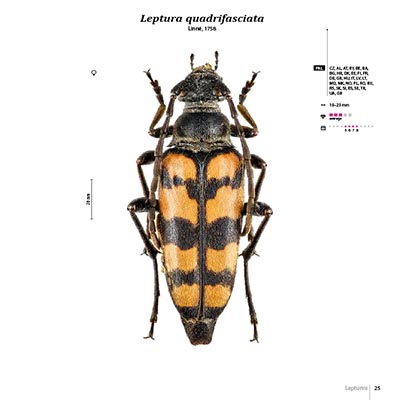
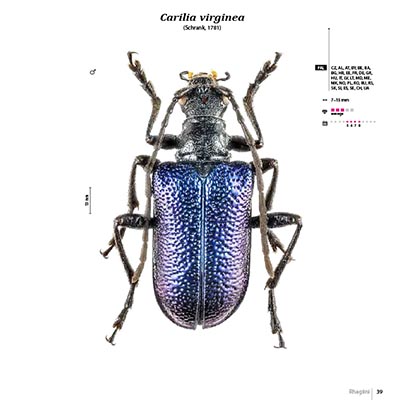
-
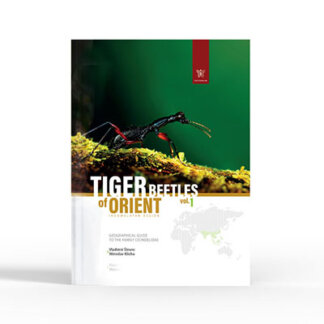 Tiger Beetles of OrientSale Product on sale
Tiger Beetles of OrientSale Product on sale€ 129.00€ 118.00 -
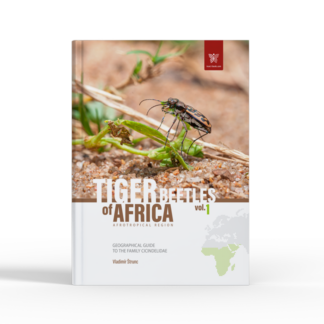 Tiger Beetles of AfricaSale Product on sale
Tiger Beetles of AfricaSale Product on sale€ 129.00€ 118.00 -
 The Prionids Collection BundleSale Product on sale
The Prionids Collection BundleSale Product on sale€ 120.00€ 80.00 -
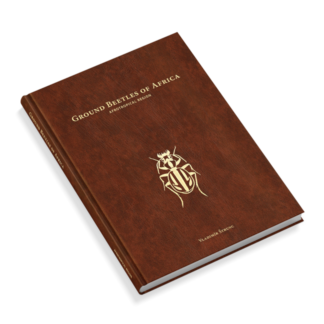 Ground Beetles of Africa (2nd edition)Sale Product on sale
Ground Beetles of Africa (2nd edition)Sale Product on sale€ 136.00€ 119.00 -
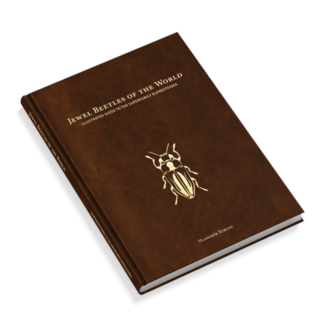 Jewel Beetles of the WorldSale Product on sale
Jewel Beetles of the WorldSale Product on sale€ 105.00€ 92.00 -
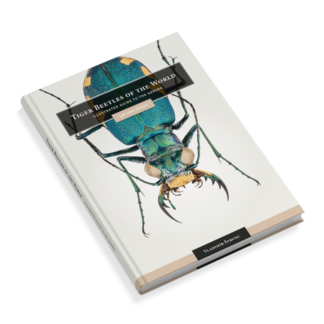 Tiger Beetles of the World€ 109.00Rated 5.00 out of 5 based on 6 customer ratings
Tiger Beetles of the World€ 109.00Rated 5.00 out of 5 based on 6 customer ratings
